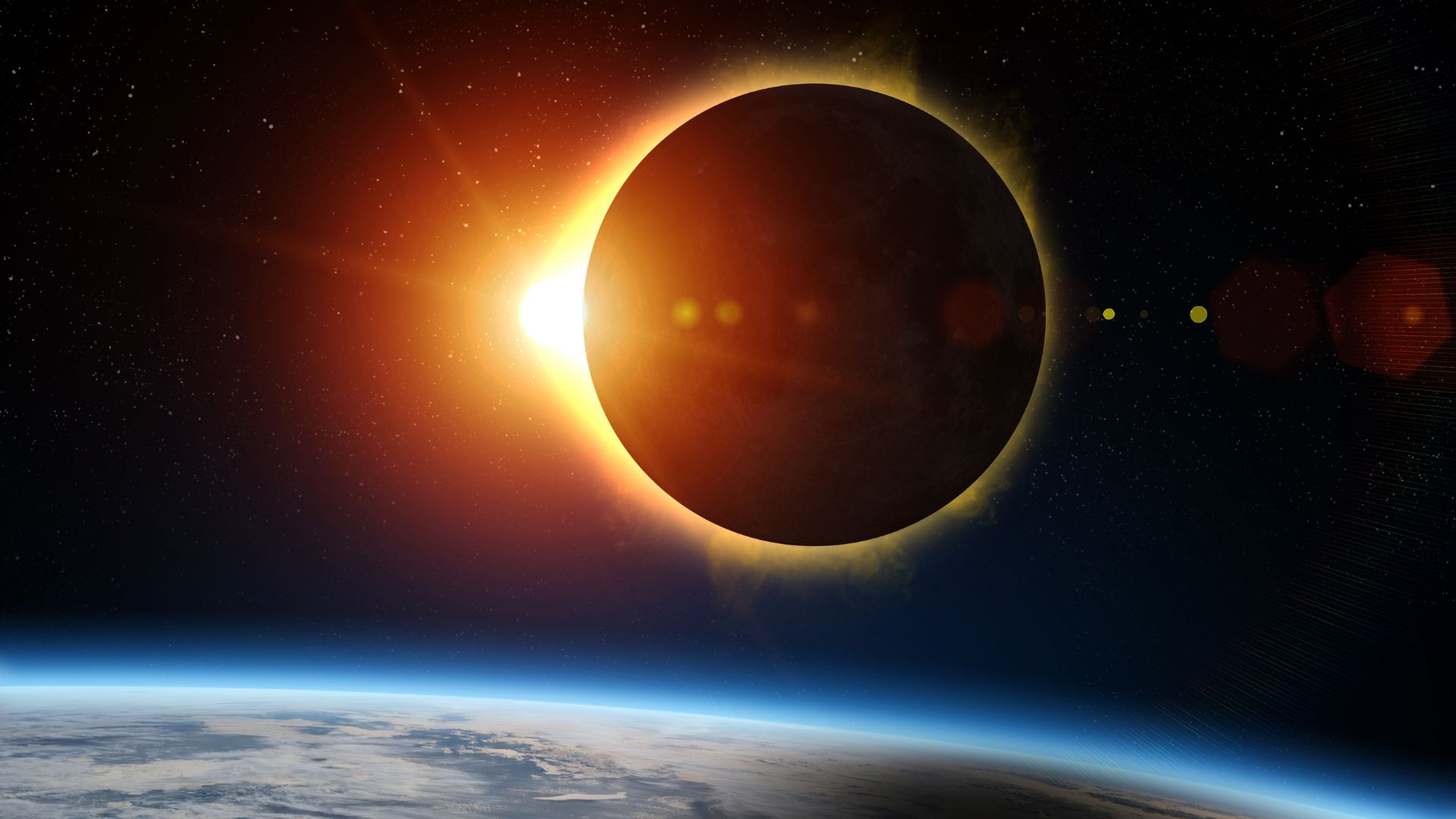On April 8, 2024, the skies above North America are poised to unveil a celestial spectacle as a total solar eclipse graces the heavens, casting a momentary darkness during the daytime. For skywatchers, this event promises a captivating experience, turning the day into an ethereal twilight. But what exactly is a solar eclipse, and how can one witness this phenomenon?
This phenomenon can be either partial, where only a portion of the Sun is obscured, or total, where the Sun is completely covered by the Moon, creating a dramatic spectacle. During a total solar eclipse, the sky darkens dramatically, resembling twilight, as the Moon completely blocks the Sun’s bright disk. This allows observers within the path of totality to see the Sun’s faint outer atmosphere, known as the corona, which is otherwise obscured by the Sun’s glare. The corona appears as a pearly white halo surrounding the darkened disk of the Moon, creating a breathtaking sight.
Understanding a Solar Eclipse:
A total solar eclipse occurs when the Moon passes between the Earth and the Sun, obscuring the Sun’s light either partially or entirely. This cosmic alignment casts a shadow on Earth, creating what is known as the “path of totality,” a narrow band where observers can witness the complete obstruction of the Sun’s disk, resulting in an eerie darkness akin to twilight.
Date and Timings for Solar Eclipse 2024:
Scheduled for April 8th, the total solar eclipse will traverse a 185-kilometer path stretching across Mexico, the United States, and Canada. A total of 18 states within the US are poised to witness this celestial spectacle. However, skywatchers in India will unfortunately miss out on the event.
According to Indian Standard Time (IST), the eclipse will commence at 9:12 pm on April 8th, with totality beginning at 10:08 pm and concluding at 2:22 am on April 9th. The journey of totality will commence along the Pacific coast of Mexico around 11:07 am PDT, eventually exiting via Maine around 1:30 pm PDT.
Read More: Solar Eclipse 2024: When Was the Last Surya Grahan Visible in India and When’s Next?
Duration of Totality for Solar Eclipse 2024:
While the entire event spans approximately two and a half hours, the mesmerizing totality phase will endure for a mere four minutes. NASA predicts a peak duration of up to 4 minutes and 27 seconds within the path of total darkness, surpassing the duration of the Great American Eclipse of 2017.
Types of Solar Eclipses :
There are three main types of solar eclipses: total, partial, and annular. A total solar eclipse is when the Moon completely covers the Sun, a partial solar eclipse is when only part of the Sun is obscured, and an annular solar eclipse occurs when the Moon is too far from Earth to completely cover the Sun, leaving a ring of sunlight visible around the Moon.
Safety Measures for Viewing Solar Eclipse 2024:
Given the Sun’s intense brightness, it’s imperative for observers to prioritize safety. Specialized eyewear, such as certified eclipse glasses, is crucial during partial phases to prevent retinal damage and potential blindness.
Live Streaming Options for Solar Eclipse 2024:
For those unable to witness the eclipse firsthand, NASA will provide a live stream beginning at 5:00 pm GMT on April 8th, featuring expert discussions and telescope views from various locations along the eclipse’s path. Additionally, the McDonald Observatory in Texas and timeanddate.com will offer live streams on their respective platforms.
ISRO’s Aditya-L1 Mission:
India’s solar probe, Aditya L1, is poised to track the Sun’s behaviour during the eclipse, offering invaluable insights into solar dynamics. Positioned at Lagrange Point 1 (L1), Aditya-L1 will observe the Sun’s chromosphere and corona, contributing to a deeper understanding of solar phenomena.
Launched earlier this year by the Indian Space Research Organisation (ISRO), Aditya-L1 is equipped with six instruments, enabling comprehensive solar observations from a vantage point 1.5 million kilometres from Earth.
As the world anticipates the celestial spectacle on April 8th, both seasoned astronomers and curious skywatchers alike prepare to witness the awe-inspiring dance of celestial bodies, uniting humanity in a shared appreciation for the wonders of the universe.
Read More: Solar Eclipse 2024: Unusual Occurrences Expected, Know Where Will It Be Visible
















